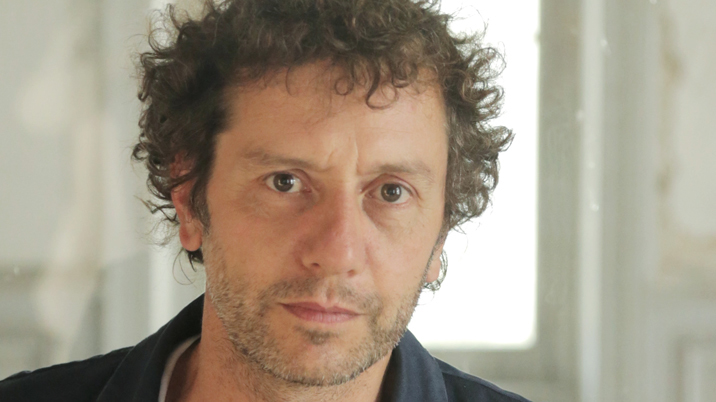
Sticking to your guns is a recurring theme for architecture and design magazine Dezeen’s founder and editor-in-chief, Marcus Fairs. And it’s as much part of his thinking following the recent sale of the title to Danish media company JP/Politikens Hus as it was when the title began as a blog written from his kitchen table fifteen years ago.
Having always wanted to be his own boss, Fairs – a design graduate, who went on to do a post-graduate course in journalism at London College of Printing in his late 30s and edit Icon magazine – launched Dezeen (‘de’ for design, ‘zeen’ for magazine) in November 2006 after spotting a gap in the architecture and design magazine sector.
He launched his idea as a blog based on WordPress with just a $20 investment (for the software) using a simple no-nonsense page design and a reverse chronological stack of stories publishing structure – core components of which remain little changed today.
“I went into it thinking there must be a business model in here somewhere, but didn’t have any idea where that might be,” he readily admits.
That quickly changed, however, following a chance meeting with Kanye West at a garden party he attended while in the US for a design fair in Miami, a couple of months after Dezeen’s launch.
The pair spoke, and West’s mention of his interest in design and a new Manhattan apartment he was having done up led to Fairs publishing the first images of it – a worldwide scoop that drove eyeballs and created buzz.
“People started to come forward and offer cash to do collaborations or straight-froward advertising,” Fairs recalls. Young talent offered to work as interns. There were travel opportunities, too.
“When people started to ask about video, I bought a camera and became a videographer, without any training. That was another key moment, when it became clear there was a business model in this,” he concludes.
Necessity proved the mother of invention, generating results that are now a lucrative – and ongoing – legacy.
A principled approach
Today, Dezeen is a digital-only magazine that attracts around 3m+ unique visitors each month – a figure that typically peaks at 3.5m in March / April. It is produced by a team of 30 and is characterised by principles.
“It was always important our stories were accurate – if we made a mistake, we quickly corrected them,” Fairs says.
This has become even more important amid the existential threat many have felt resulting from the rise of social media and the Trump years’ constant fake news refrain. He adds: “It felt like quality journalism was something worth standing up for.”
Design was also key, with the overarching rule being: simple and clean. Which is why Dezeen’s look – conceived by long-time collaborator Micha Weidmann, who also created the magazine’s logo – has been little changed in years.
Also important was to have “some sort of moral compass to help take the architecture and design industry in a way we thought it should be going”.
“This was particularly so in terms of diversity and climate change – not by lecturing, but by curating our site in a certain way so as to lead the industry rather than just report on it,” Fairs continues.
“How to preserve journalism in the face of all these threats is to come up with a way of doing good journalism that makes a profit, which is fiendishly difficult to do but we now have a parent that believes in that.”
Looking back, it might have been better to secure external investment – and recruit professional salespeople – sooner than three years in, he admits. Yet despite this, Dezeen didn’t just survive but thrive. And it weathered the storm in 2020 during the onset of the global pandemic.
By the end of 2019, events – producing videos of design events and talks for brands as well as product launches and an awards show – along with classified ads had become a significant revenue generator. Dezeen had also built a solid recruitment business.
So, it was an absolute rollercoaster last March and April; there were weeks when no money was coming in. Fairs reveals: “We really thought we’d not see the summer out, let alone the year.”
However, necessity proved the mother of invention, generating results that are now a lucrative – and ongoing – legacy.
“We thought, if there are no events, why don’t we come up with our own? We came up with the idea of a virtual design fair on our website and, miraculously, we were first out of the blocks and it worked,” he explains.
Dezeen’s virtual design festival was launched from scratch in a couple of weeks and involved daily collaborations with a wide range of partners via the website, Zoom and YouTube.
Revenue-generating ideas included providing an affordable platform for design and art schools for graduate shows. A new way of shooting video content virtually using Zoom, meanwhile, was also successful as it helped create a video offering that didn’t rely on travel.
“The virtual festival brought people together, it got lots of press, and we generated lots of business ideas that are now becoming part of our portfolio – it was like starting the company all over again!”
Thanks to Covid-19, plans to launch in the US and build Dezeen’s presence in China were put on ice.
But now, Fairs declares, with plans for international expansion rekindled and some kind of a pay model – more membership club to foster connections than simple paywalled content – being discussed, things are once more on the up.
“Our plans are entirely revenue-funded. The JP/Politikens Hus acquisition is more a safe harbour for the future with a good partner with an ethical outlook,” he notes. “Now, again, we are off the blocks.”

You can hear Marcus Fairs being interviewed by James Evelegh on a recent episode of The InPublishing Podcast, which was sponsored by AdvantageCS, a leading global provider of subscription and membership management software.
This article was first published in InPublishing magazine. If you would like to be added to the free mailing list, please register here.










